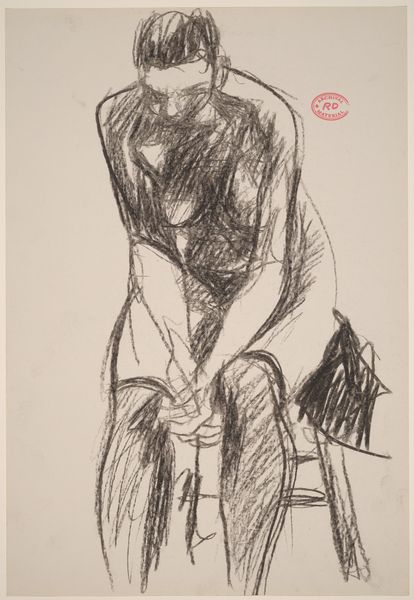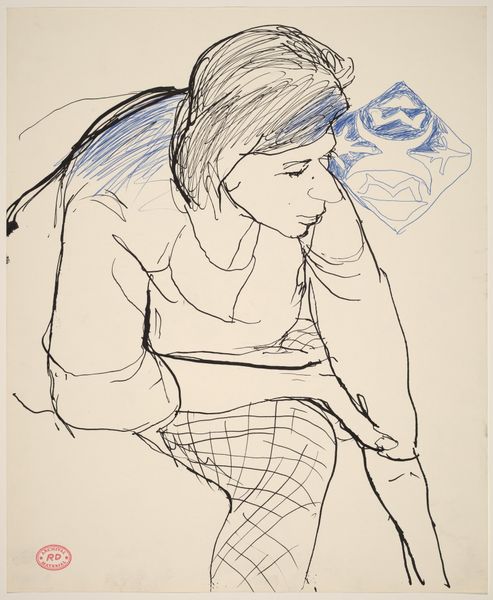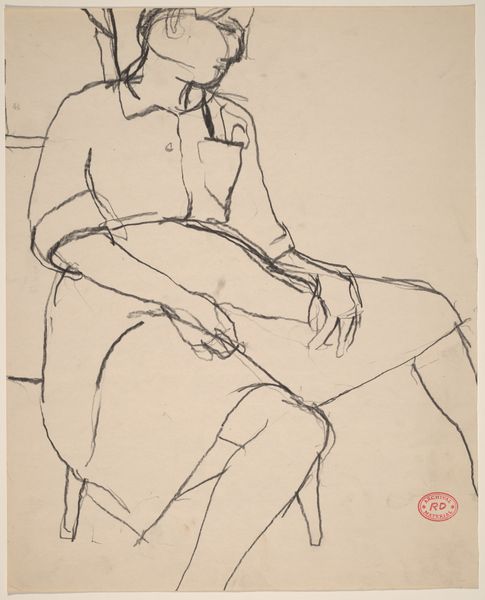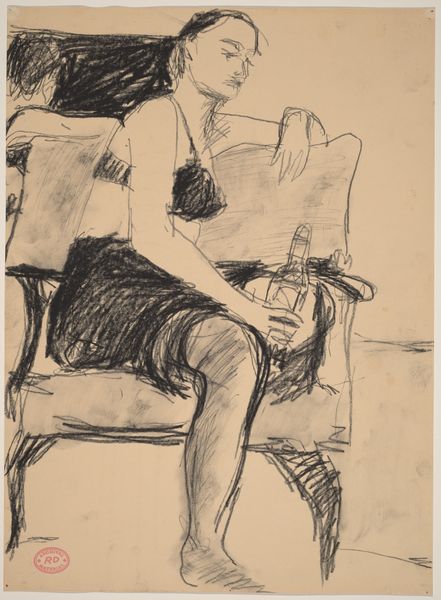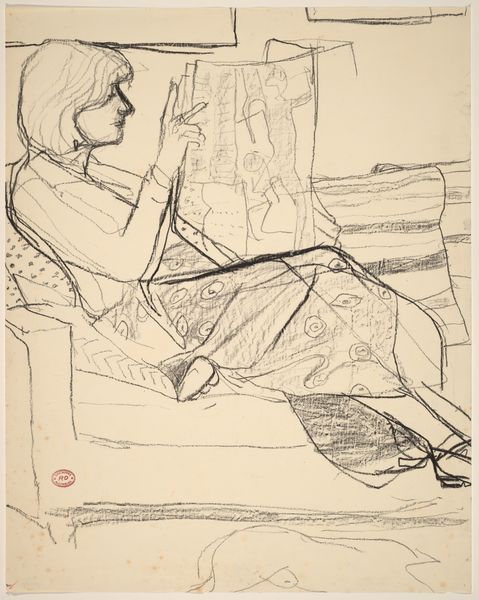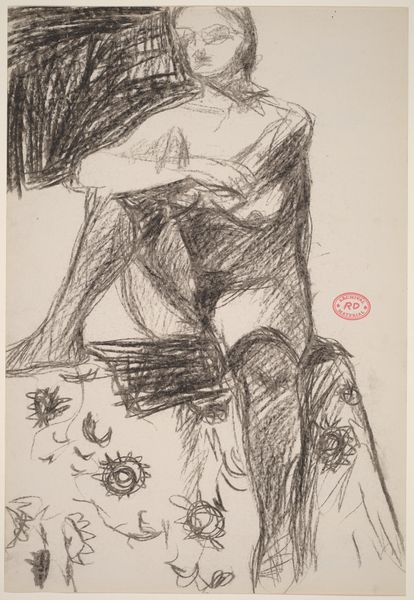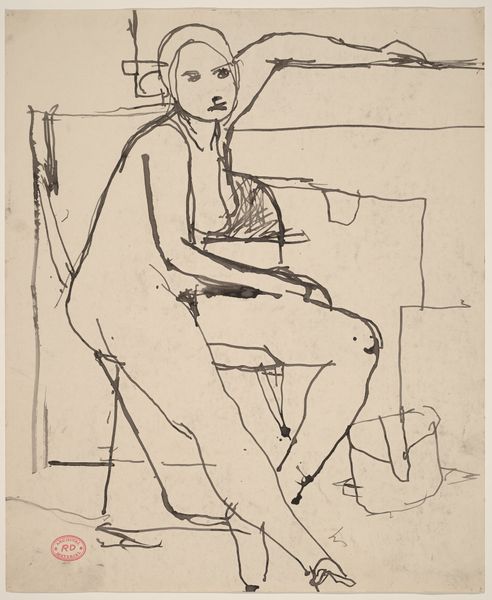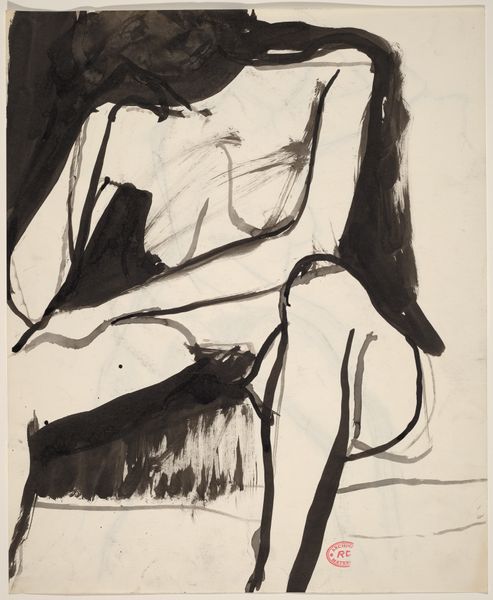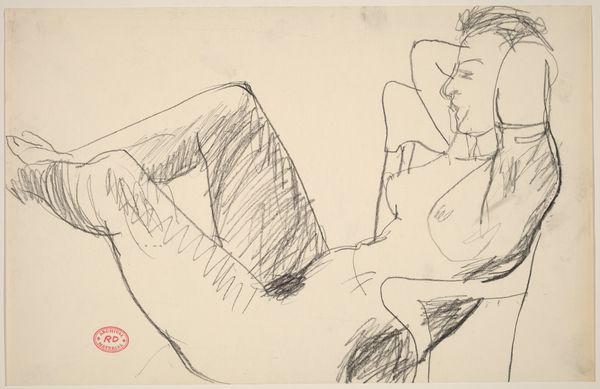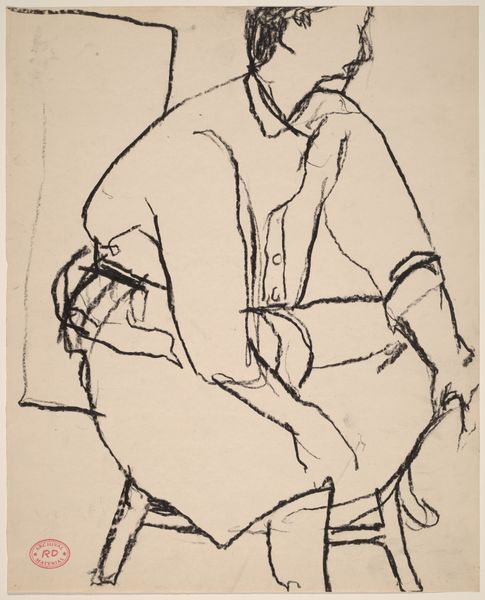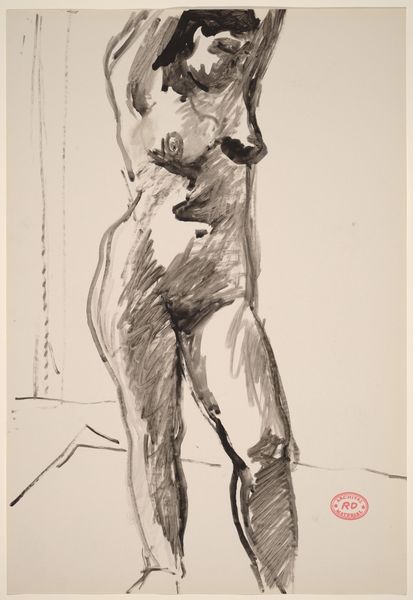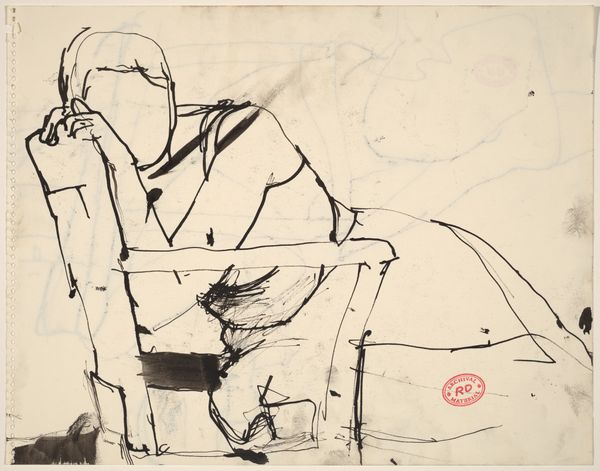![Untitled [nude seated sideways in an armchair] by Richard Diebenkorn](/_next/image?url=https%3A%2F%2Fd2w8kbdekdi1gv.cloudfront.net%2FeyJidWNrZXQiOiAiYXJ0ZXJhLWltYWdlcy1idWNrZXQiLCAia2V5IjogImFydHdvcmtzLzcyYjk4MWQyLTU4ZDctNDYzMi04ZTk3LTMzYzU0MGExNjg0Ny83MmI5ODFkMi01OGQ3LTQ2MzItOGU5Ny0zM2M1NDBhMTY4NDdfZnVsbC5qcGciLCAiZWRpdHMiOiB7InJlc2l6ZSI6IHsid2lkdGgiOiAxOTIwLCAiaGVpZ2h0IjogMTkyMCwgImZpdCI6ICJpbnNpZGUifX19&w=3840&q=75)
Untitled [nude seated sideways in an armchair] 1955 - 1967
0:00
0:00
drawing, ink
#
portrait
#
drawing
#
ink drawing
#
pen sketch
#
bay-area-figurative-movement
#
ink
#
portrait drawing
#
nude
Dimensions: overall: 42.9 x 34.9 cm (16 7/8 x 13 3/4 in.)
Copyright: National Gallery of Art: CC0 1.0
Editor: This ink drawing, “Untitled [nude seated sideways in an armchair],” by Richard Diebenkorn, was created sometime between 1955 and 1967. There’s something really immediate about the lines – it feels so spontaneous, yet captures this sense of contemplation. What strikes you when you look at this piece? Curator: Well, considering the period, Diebenkorn was working in an era heavily influenced by Abstract Expressionism. Yet, even here, we see the figure persisting. How does this image fit within a broader art historical context where the nude had, arguably, been thoroughly explored? Where does its power reside? Editor: That's a great question. I guess the simplified lines bring a sense of raw intimacy that I haven't seen elsewhere. It's like he is deconstructing the tradition. Curator: Exactly! The rawness is key. The work challenges traditional power dynamics. Think about the societal shifts during the mid-20th century: burgeoning feminist movements questioning the male gaze in art. Diebenkorn presents the female form, but strips it of conventional idealization. This wasn’t just a portrait of a nude, it was a commentary on how women were seen, both within art and in broader society. Do you think the medium—a simple ink drawing—plays a part in this? Editor: Absolutely. The simplicity takes away the potential for grandeur often associated with nude paintings, which feels deliberate. Curator: Precisely. It invites a different kind of viewing, one less about admiration and more about quiet observation, which aligns with the shifting cultural attitudes of the time. It's a drawing deeply engaged with the social climate of its creation. Editor: I see now. The drawing acts as both a response to and a subtle rebellion against art-world traditions. Curator: Indeed. Looking closer, one might say that the piece reclaims agency of female bodies within visual culture and questions traditional norms. It certainly opens up a wider historical and political scope. Thank you.
Comments
No comments
Be the first to comment and join the conversation on the ultimate creative platform.
